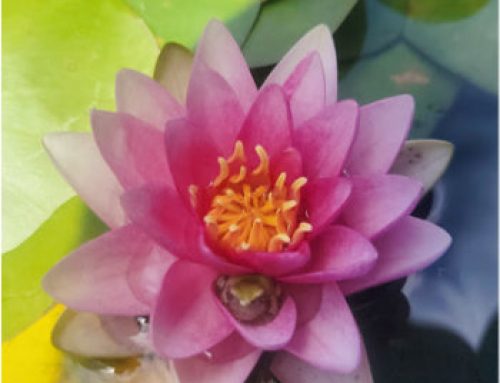1. DNA
Similar to humans, koi are genetically determined how big they can grow. As koi owners, we can only influence the living conditions so that your koi may grow to its maximum size potential. Those conditions will be covered as you read through this article.
2. Space
Many koi breeders have massive mud ponds that provide more than sufficient space for several koi to grow. However, fish in your backyard koi pond need to be monitored more carefully, as it is likely you have limited space for large koi. The general rule is 1 koi for every 10-square feet of pond surface area. It also may be wise to keep even fewer fish depending on your pond’s filtration system to maintain good water quality.
3. Nutrition
One of the most important growth factors you can influence is based on the food you feed them. Never skimp on the quality of your fish food, and be weary of food with high protein levels. Koi fish can only absorb up to 38% of protein and the rest will simply disappear as waste in your pond
4. Water Quality
Maintaining good water quality is what many pond owners strive for to keep a healthy-looking pond. Proper filtration, a balanced selection of aquatic plants, and low enough levels of fish waste all play a factor in a properly balanced ecosystem pond. Regularly removing any large amounts of organic material such as leaves can help prevent the material from breaking down into your pond water.
5. Oxygen
A very underrated growth factor in a koi pond is oxygen in the pond. A strong enough flow from a waterfall may create enough oxygen however you can add more using a pond aerator. If your pond does not have enough oxygen for your fish they could become ill or even die.
6. Water Temperature
The temperature of your pond water is a factor that can easily change the growth of your koi. Koi tend to grow faster at higher temperatures. At 65 degrees much of the energy from your koi is put into skin quality while at 75 degrees and above the energy focus is on the length and growth of your koi. Keep in mind that koi grow much quicker in their first few years than they do when they are over the age of 5
7. Gender
Quite simply stated, female koi grow larger than male. So if you are looking to have larger koi fish you may want to pay close attention to the gender of the fish you purchase.
koi are known for being large fish. A fully grown koi can reach upwards of 24″ or more, which is why it can be worrisome as a hobbyist when your koi’s development is stunted. If your koi aren’t growing, there’s likely a reason for it.
It’s important to keep in mind that there are a number of things that impact fish development. Here are six common factors that can impede koi growth and a few ways you can fix the problem.



